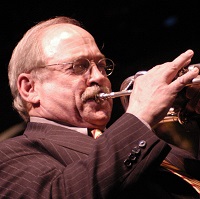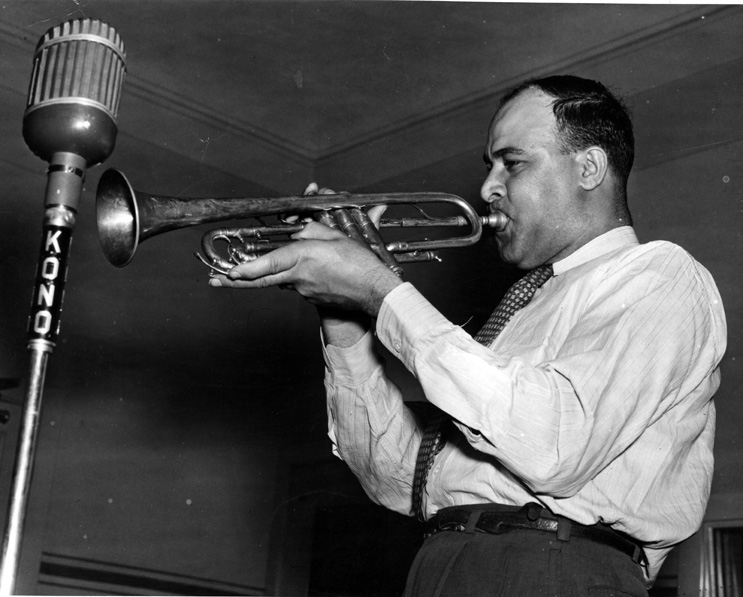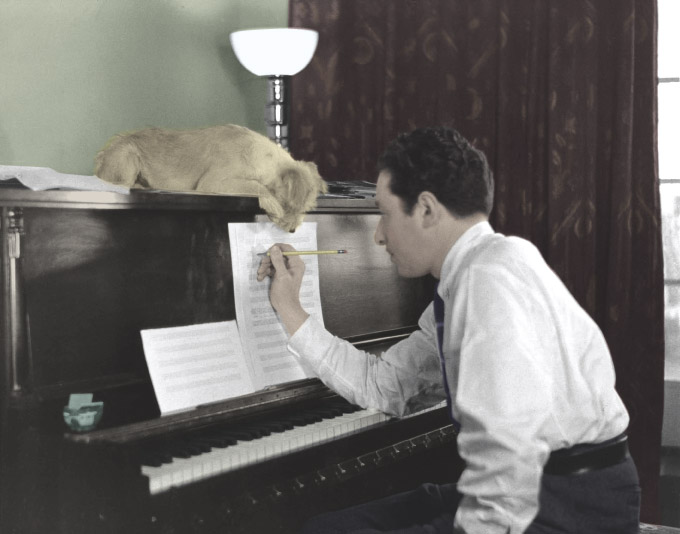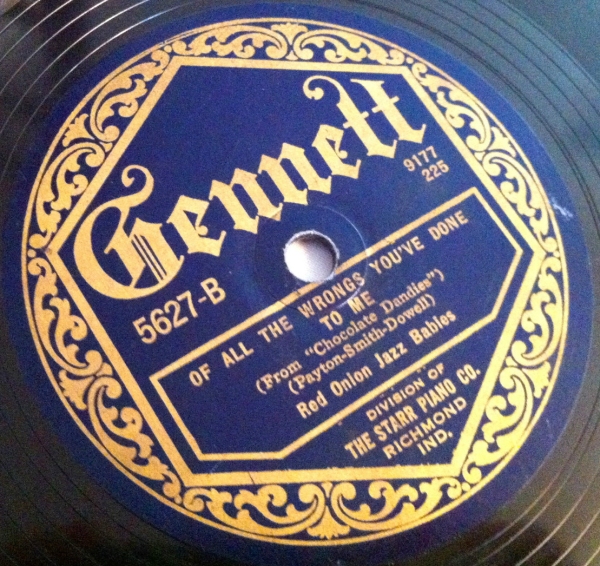
Bandleader and cornetist Jim Cullum. Photo by Nick Balkin.
Since 1972 Stanford University has presented the renowned Stanford Jazz Workshop, bringing together world-class jazz players and young musicians for ‘close encounters of a musical kind.’ Each July the tranquil, palm-lined Stanford campus, surrounded by the hustle and bustle of Silicon Valley, is transformed into a jazz camp. Young horn players, drummers, guitarists and keyboardists from all over the world gather to meet and work closely with some of the greatest jazz musicians playing today.
The Jim Cullum Jazz Band took up residency at the Workshop every summer from 1994 to 2004 and became a vital part of the legendary teaching staff, which has included artists Stan Getz, Dizzy Gillespie, Ray Brown and Phil Woods. As the first classic-style jazz band in the history of the Workshop, the Cullum band gave many young attendees their first exposure to the music of Jelly Roll Morton, Louis Armstrong and Bix Biederbecke.
According to Stanford jazz lecturer and Workshop Executive Director Jim Nadel, it was a magical encounter. "To make a contemporary creative statement, one has to have knowledge of the past. The Jim Cullum Jazz Band is a world class group—its members are articulate and understand early jazz in a way that lets them communicate it. It's valuable for kids in our program to develop this historical context."
This edition of Riverwalk Jazz documents a broadcast concert presented by The Jim Cullum Jazz Band at the Stanford Jazz Workshop in 1995 and attended by students and faculty at Dinkelspiel Auditorium on campus. Here are the highlights:

Don Albert. Photo used by permission of Don Albert's son Kenneth Dominique.
"Deep Blue Melody," recorded in San Antonio in 1936 by Southwest Territory bandleader and trumpeter Don Albert, was composed by band member Lloyd Glenn in a style reminiscent of Duke Ellington compositions of the period.
"One Step to Heaven" from 1928 is a blues-based tune written for a New York Broadway show, Lucky Lady. It entered the jazz world through a recording featuring trumpeter and session leader Red Nichols, trombonist Miff Mole and guitarist Eddie Condon, a recent arrival in Manhattan from Chicago at the time.
Great American Songbook tunesmith Harold Arlen composed "A Sleepin' Bee" with lyricist Truman Capote for the 1954 Broadway show House of Flowers. The concept of the song title derives from a Haitian folklore belief that if a bee falls asleep in the palm of your hand, you know you have found your true love. “A Sleepin’ Bee” has been covered by many artists including Mel Tormé, Nancy Wilson and Leontyne Price. Pianist John Sheridan arranged our languid instrumental version, which opens with a duet by clarinetist Brian Ogilvie and Mike Pittsley on trombone.

Harold Arlen and dog Shmutts. Courtesy Sam Arlen.
"Butterscotch" is an original by John Sheridan, and he performs it here as a solo piano piece.
The Cullum band offers two classics from New Orleans cornetist and seminal jazz bandleader Joe "King" Oliver. Jim Cullum says, "By 1930 Oliver's star was beginning to fade a bit but he was still doing some interesting pieces, including this little-known piece “Sweet Like This.” King Oliver’s best-known original piece is "Dipper Mouth Blues," recorded in 1923 with Louis Armstrong on second trumpet. In this performance, cornetist Jim Cullum recalls Oliver's famous solo on “Dipper Mouth” and uses Oliver’s signature technique of holding his mute in the bell of the horn for a blues-y, vocal-like "wa-wah" effect.

“All the Wrongs You’ve Done to Me” Copyright Public Domain, courtesy of the Starr-Gennett Foundation, Richmond, Indiana.
Louis Armstrong composed and recorded a piece in 1926 with a group called the Clarence Williams Red Onion Jazz Babies. The title says it all—"Of All the Wrongs You’ve Done to Me, They're Bound to Come Back to You."
Duke Ellington's "Ring Dem Bells," first recorded in 1930, appears here as an up-tempo swinging showcase for clarinetist Brian Ogilvie.
In the recent past, much emphasis has been placed on the post-bebop era of jazz and young musicians have had few opportunities to be exposed to the music of King Oliver, Louis Armstrong, Fats Waller, James P. Johnson, and other iconic jazzmen of the pre-World War II era. Jim Cullum is often asked by young jazz players how he remains so passionate about early jazz. He answers that classic jazz is a living music. "When I play this music I'm overwhelmed with the same excitement and joy as the musicians who first played it."
As Jelly Roll Morton said, "Good music doesn't get old."
Photo credit on Home Page: Bandleader and cornetist Jim Cullum. Photo by Nick Balkin
Text based on Riverwalk Jazz script by Margaret Moos Pick © 1995

